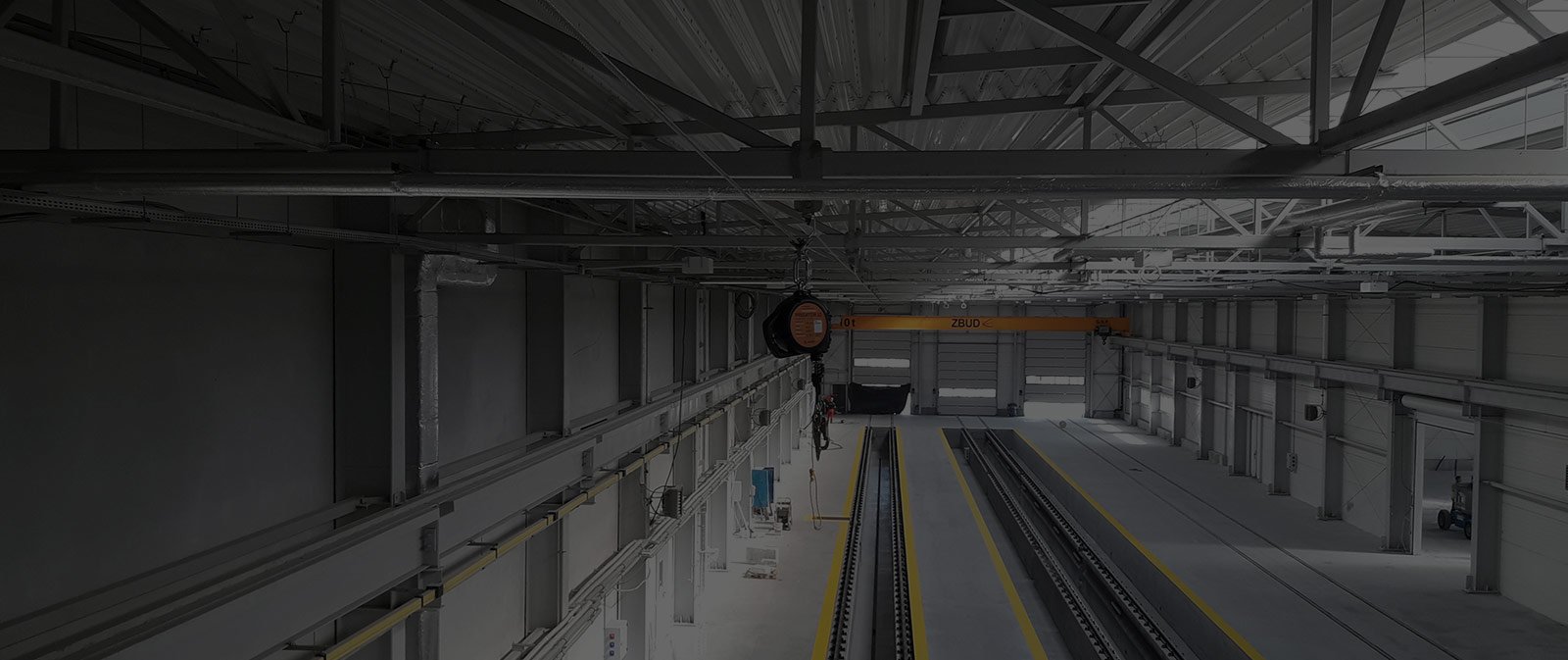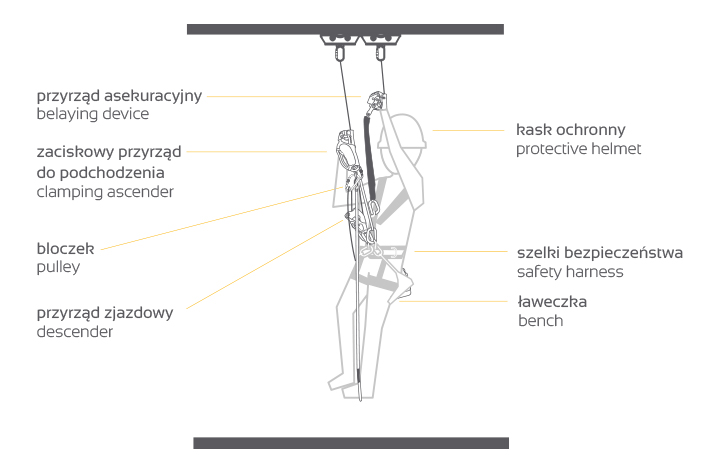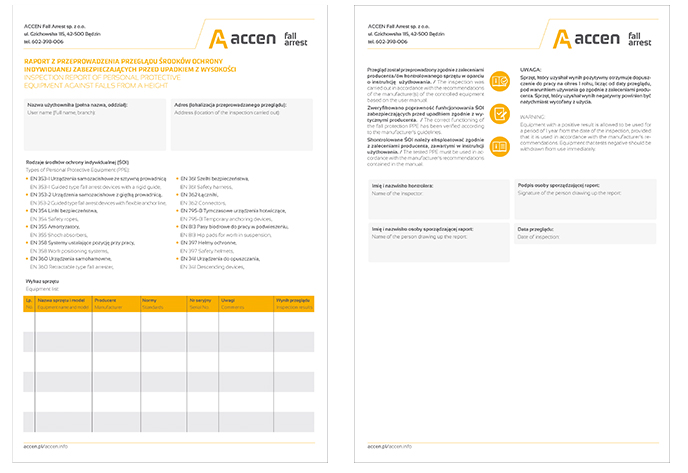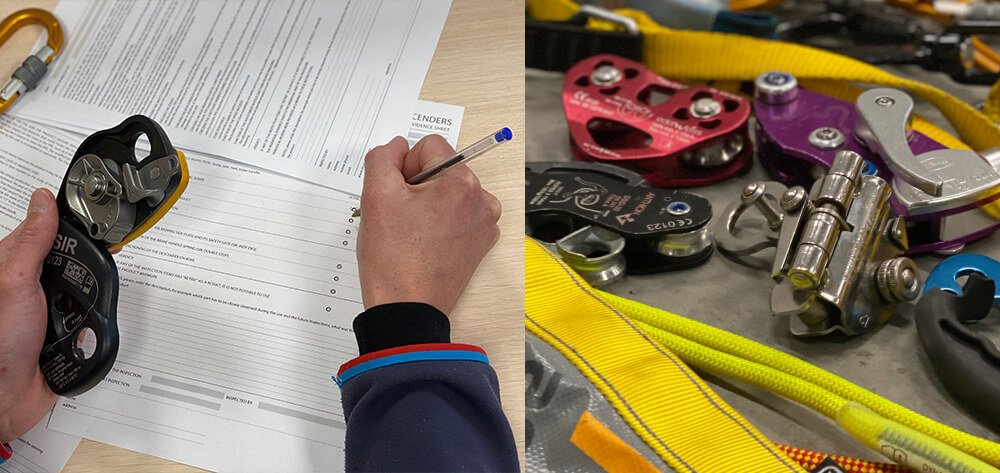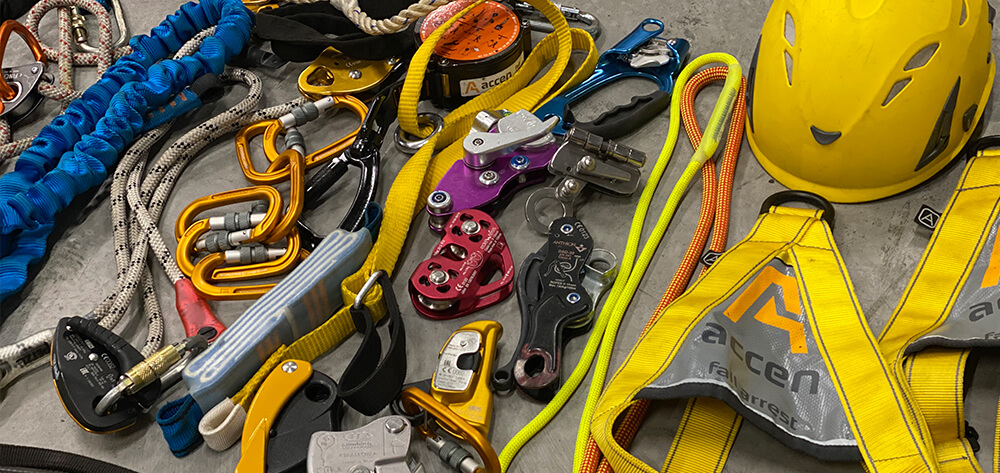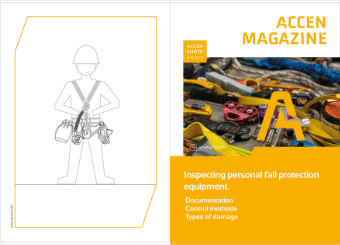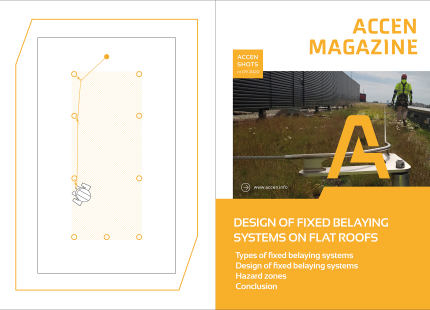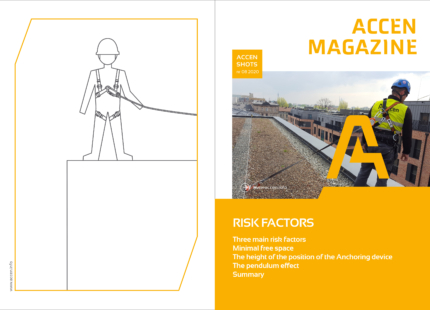
INSPECTING PERSONAL FALL PROTECTION EQUIPMENT
Personal fall protection equipment is a piece of personal equipment which, when properly used by an employee, protects him/her from falling from a height.
A very important element of safety in their use is periodic and pre-use inspections. If you want to use such equipment, you should receive training in its safe use. One element of such training should be the principles of basic check of belaying equipment before each use. Such checks are performed by the user himself for his own safety.
Documentation
Another type of equipment verification is the periodic inspection, which is carried out at least once every 12 months and more frequently in special cases. Such inspections should be carried out by a competent person with appropriate knowledge and experience and in strict accordance with the manufacturer’s procedures. Each component of the fall protection system should have documentation containing information on:
- product name (e.g. safety harness), model and type of identification
- manufacturer’s or supplier’s name and contact details,
- means of identification, which may be either batch number or serial number,
- year of manufacture or use-by date,
- the date of purchase,
- maintenance rules,
- the date of first release for use,
- maintenance and repair history
All information concerning periodic inspection and repair of the equipment during its operation shall be recorded in the control card. It shall also indicate any withdrawal from use.
During the inspection, the first thing to check is that complete documentation is available, that the user’s card is filled and when the last inspection was performed. The equipment must be identifiable, i.e. in addition to the documentation, it must have legible markings characterizing it.
Control methods
In most cases, the inspections are performed using the organoleptic method, without the need to use specialized tools. In some cases, basic tools are useful, such as: caliper, tape measure, magnifier glass, hot knife, synthetic grease.
It should be mentioned that there is also a certain group of equipment falling under the category of personal protective equipment, which requires special checks with dedicated tools and/or equipment. These include some of the guided type devices, rail guided type devices, escape and rescue devices and others specified by the manufacturer.
Common PPE can be verified manually or using a comparative technique. It is based on searching for anything that deviates from the norm in comparison with a new product.
The construction of personal protective equipment used to work at height is characterized by the complexity of the structure. Critical knowledge and experience in the field of safety equipment are necessary for the correct assessment of personal protective equipment and other equipment.
Types of damage
What should be taken into account when checking the technical condition of individual components made of metal, plastics, including synthetic fibers:
1. Damage to the straps as a result of mutual friction between various elements, e.g. the strap and the buckle – may damage the supporting structure of the safety harness
2. Natural wear and tear of textile elements through degradation of the fibres when exposed to UV radiation, damage caused by mineral particles (sand grains, etc.), exceeding the “age limit” – aging of the material, loss of elasticity due to repeated wetting / drying
3. Incorrect use causing abrasions, damage (cuts, unstitching fibers) with sharp tools or structural elements, melting / burning of the tapes with fibers due to friction, contamination with chemical substances,
4. Dynamic loads on elements carrying high forces when stopping a fall, especially with a high rate of fall,
5. Corrosion of metal parts, especially in sheltered areas (e.g. buckles in safety harness) due to improper or lack of maintenance,
6. Bent and deformed metal parts indicate very high overloads (e.g. related to falling off) or improper use (e.g. dynamic loads threaten to bend the casing of the downhill instruments),
7. Mechanical damage as a result of an impact (deep dents on the body) against the ground from a great height,
8. Damage caused by an incorrect way of marking the belonging to the owner (e.g. “stamping” initials on metal parts)
9. Cracks and structure fractures caused by falling from a great height to a hard surface,
10. Tearing of the absorber seams (according to the assumptions of energy absorption), abrasions or torn seams (e.g. safety harness)
11. Deformation of the safety helmet due to sitting on it and crushing it (e.g. due to improper storage),
12. Destruction of the material of the protective helmet shell by using stickers, marking it with markers not intended for this purpose,
These are just some of the types of damage that eliminate individual fall protection equipment. Equipment that has not passed the inspections due to damage or exceeding the use-by date should be properly marked and isolated so that it cannot be reused. The best solution is to physically destroy and dispose of the remaining waste.
Always follow the manufacturer’s instructions in the user manual when carrying out maintenance.


